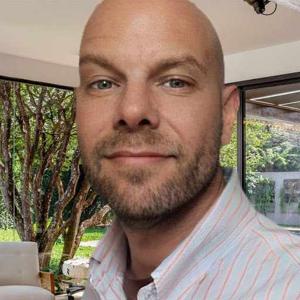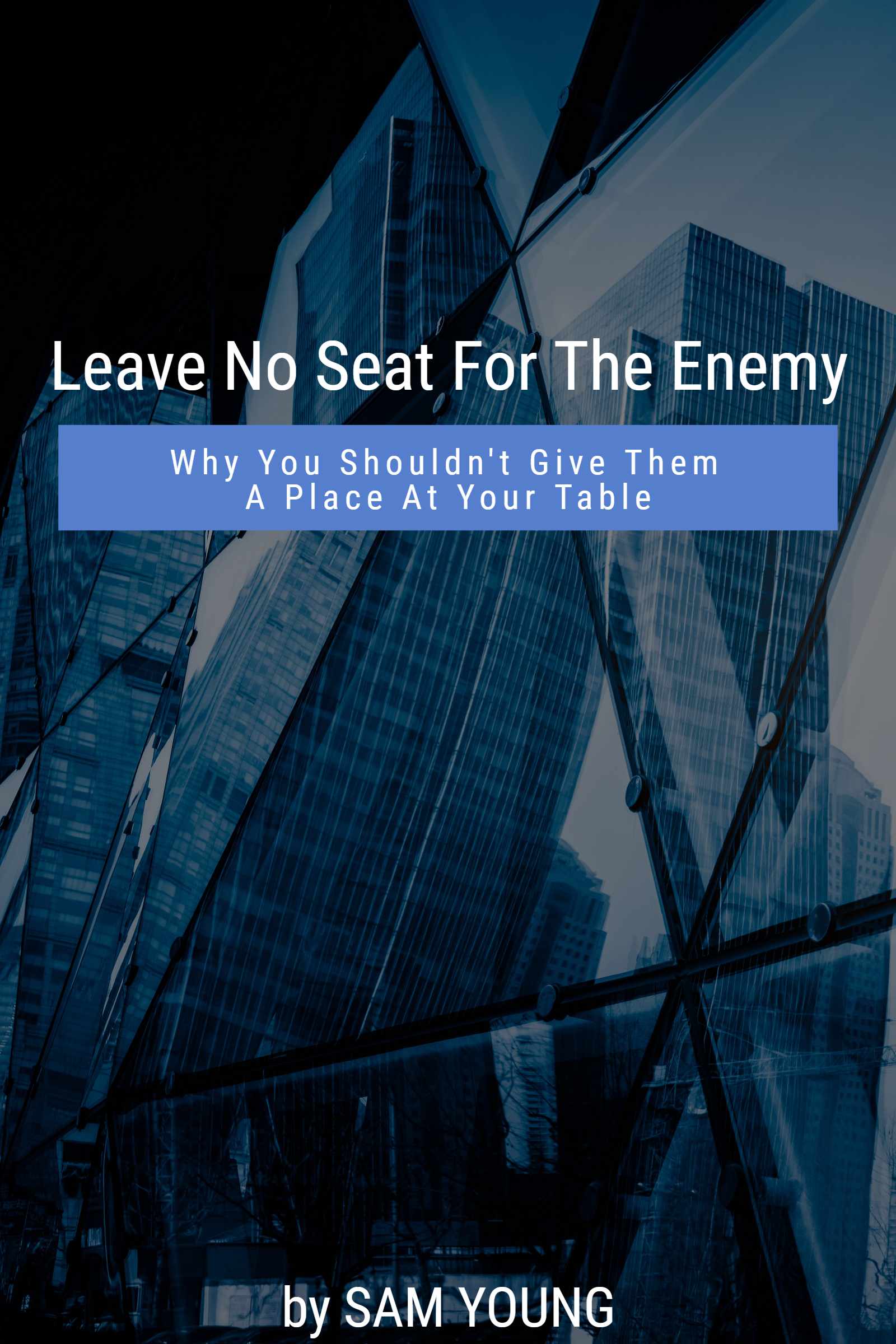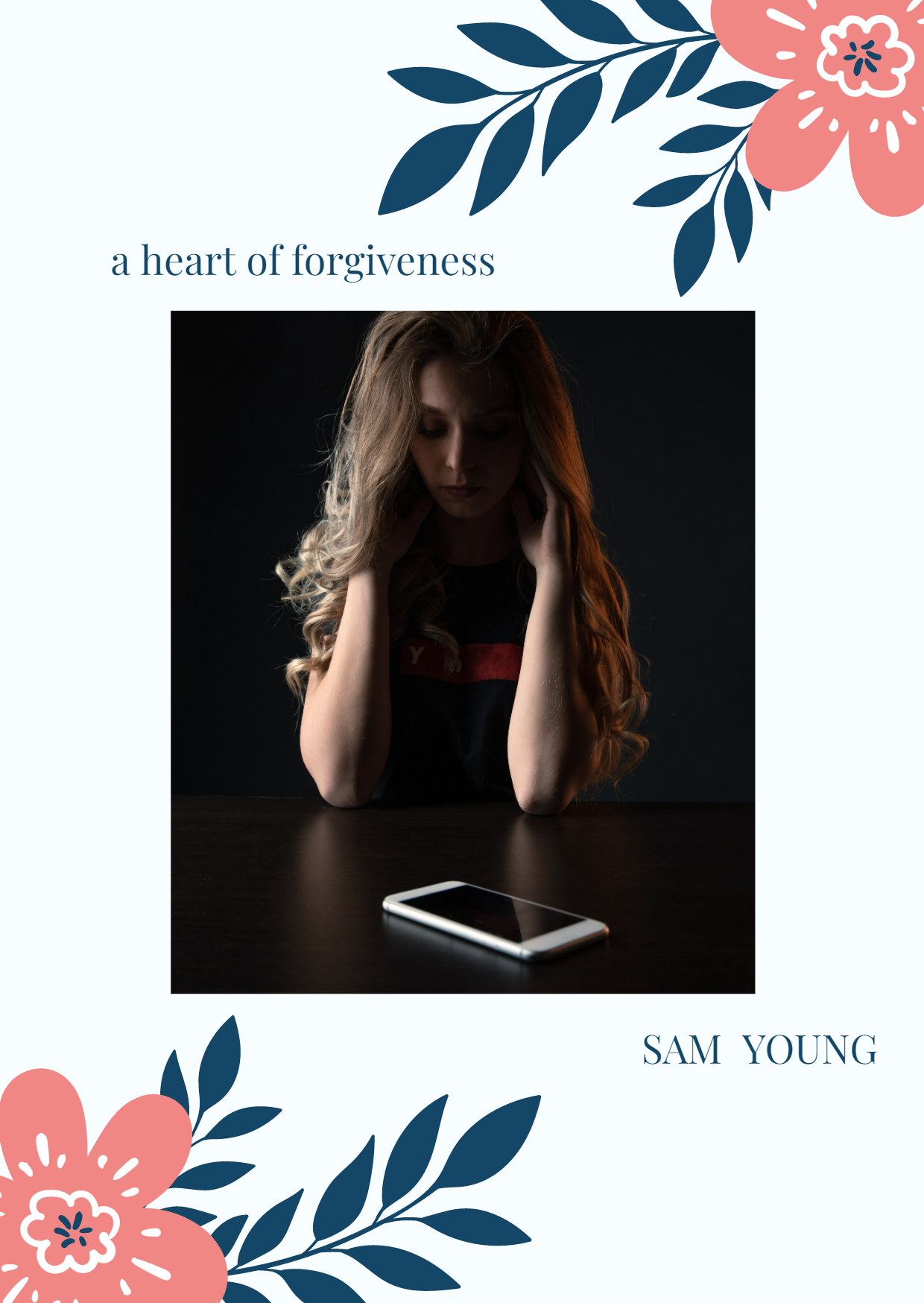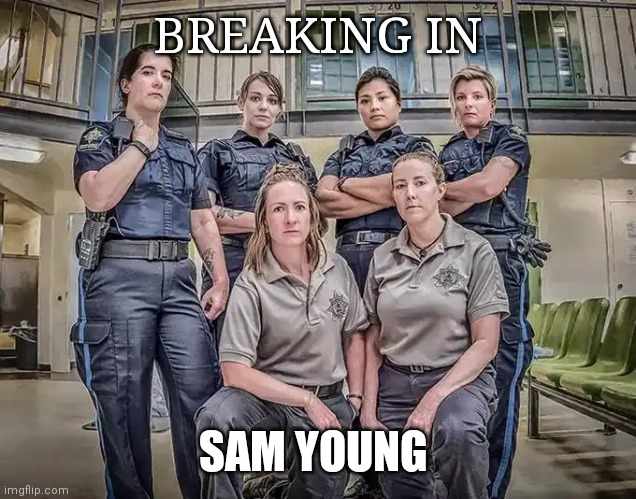Chapter 1: The Move
Introduce Sean Price, a police officer who decides to move from Tampa to Jacksonville, Florida, to start a new chapter in his life.
Describe Sean's motivations for moving, including his desire for a fresh start and a new adventure in a new city.
Show Sean's preparations for the move, including packing up his belongings and saying goodbye to friends and colleagues in Tampa.
Describe Sean's arrival in Jacksonville and his first impressions of the city, including its sights, sounds, and people.
Show Sean's efforts to settle into his new home and community, including finding a new apartment, getting to know his neighbors, and exploring the city.
Highlight the challenges Sean faces as he adjusts to life in a new city, including learning his way around, adapting to a new work environment, and making new friends.
Show how Sean's experience as a police officer in Tampa prepares him for his new role in Jacksonville, and how he hopes to make a positive impact in his new community.
End the chapter by introducing the themes that will be explored in the rest of the book, such as the challenges of being a police officer, the dynamics of working in law enforcement, and the mysteries and secrets that lurk beneath the surface of everyday life.
Sean Price had always known he wanted to be a police officer. From a young age, he was fascinated with the idea of protecting and serving his community, and as he grew older, that passion only intensified. He knew that becoming a police officer would not be an easy path, but he was determined to do whatever it took to achieve his dream.
After completing his training and spending several years working as a police officer in Tampa, Sean began to feel a sense of restlessness. He loved his job and his colleagues, but he couldn't shake the feeling that there was something missing. He felt like he was stuck in a rut, and he longed for a change of scenery.
It wasn't until Sean's sister, who lived in Jacksonville, started talking about how much she loved her new city that Sean began to seriously consider a move. The more he thought about it, the more it made sense. Jacksonville was only a few hours away from Tampa, so he could still visit his old friends and colleagues whenever he wanted. But it was far enough away that it felt like a fresh start.
Sean had always been the type of person who was open to new experiences and willing to take risks. He knew that moving to a new city would be a challenge, but he was excited about the opportunity to explore a new place, meet new people, and learn new things.
As he started to make plans for his move, Sean felt a renewed sense of energy and purpose. For the first time in a long time, he felt like he was moving in the right direction.
One of the biggest factors in Sean's decision to move was his desire for a fresh start. He had been working as a police officer in Tampa for several years, and while he loved his job, he felt like he had hit a wall. He had seen and experienced so much during his time on the force, but he was starting to feel like he had seen it all. He knew that he needed to shake things up if he wanted to continue to grow and evolve as a person and as a police officer.
Sean was also motivated by his desire for a new adventure. He had always been an adventurous person, and he felt like he had been stuck in a rut for too long. He wanted to experience new things, see new places, and meet new people. Moving to Jacksonville felt like the perfect opportunity to do just that.
Of course, making a move like this was not without its challenges. Sean had to spend months preparing for the move, from finding a new place to live to saying goodbye to his friends and colleagues in Tampa. He also had to deal with the logistics of moving all of his belongings to a new city.
But despite the challenges, Sean was excited about what lay ahead. He was ready to start a new chapter in his life, and he was determined to make the most of this new adventure.
As Sean prepared to leave Tampa behind, he felt a mix of emotions. He was sad to be leaving behind his friends and colleagues, but he was also excited about the new opportunities that awaited him in Jacksonville. He knew that there would be challenges ahead, but he was confident that he was making the right decision.
And so, with a sense of purpose and excitement, Sean set off for Jacksonville, ready to begin his new life in a new city.
Sean had spent months preparing for his move to Jacksonville, and as he arrived in the city, he couldn't help but feel a sense of excitement and anticipation. He had always been a lover of new experiences, and this was the biggest one he had ever embarked upon.
As he drove into the city, Sean was struck by the beauty of his new surroundings. Jacksonville was a city that seemed to have it all: beautiful beaches, thriving nightlife, and a rich cultural scene. As a police officer, Sean knew that he would be tasked with protecting this city and its citizens, and he was eager to get started.
One of the first things Sean did when he arrived in Jacksonville was to find a place to live. He had done his research before he moved, and he had a good idea of where he wanted to live. He eventually settled on a small apartment complex in the Riverside neighborhood, which was known for its vibrant community of young professionals.
As he settled into his new home, Sean couldn't help but feel a sense of excitement about the possibilities that lay ahead. He was eager to explore his new neighborhood and get to know his new neighbors. He knew that building strong relationships with the people he would be serving and protecting would be crucial to his success as a police officer.
Over the next few weeks, Sean spent a lot of time exploring his new city. He walked along the riverfront, took in the local art scene, and sampled the delicious food at some of Jacksonville's many restaurants. He was struck by how friendly the people were and how much pride they took in their city. It was clear to Sean that he had made the right decision in moving to Jacksonville.
As he settled into his new routine, Sean began to realize that there were challenges to living in a new city. He had to learn his way around, figure out the best routes to get to work, and get used to the local customs and traditions. But despite these challenges, Sean was determined to make a home for himself in Jacksonville.
One of the biggest challenges Sean faced was adapting to his new work environment. He had spent years working as a police officer in Tampa, and he was used to the way things worked there. But Jacksonville was a different city with its own unique set of challenges and issues. Sean knew that he would need to spend time learning about the city's crime patterns, as well as the best practices for community policing.
Fortunately, Sean was a quick learner, and he was able to adapt to his new role quickly. He spent time talking to his colleagues and getting to know the neighborhoods he was responsible for patrolling. He also spent time reaching out to community leaders and members, in an effort to build relationships and establish trust.
One of the things that helped Sean in his transition to life in Jacksonville was his experience as a police officer in Tampa. He had seen and experienced so much during his time on the force, and he was able to use that knowledge to help him navigate the challenges of his new job. He knew how to stay calm under pressure, how to read people and situations, and how to communicate effectively with people from all walks of life.
As Sean settled into his new life in Jacksonville, he couldn't help but feel a sense of satisfaction. He knew that he had made the right decision in moving to this city, and he was excited about the possibilities that lay ahead. He was eager to continue to build strong relationships with the people he served and protected, and he was determined to make a positive impact in his new community.
Moving to a new city had not been easy, but Sean knew that it was the right choice for him. He was grateful for the opportunity to start a new chapter in his life, and he was excited to see what the future would bring.
As Sean settled into his new life in Jacksonville, he began to develop a routine that helped him feel more at home in his new city. He woke up early each morning and went for a run along the riverfront, enjoying the cool morning air and the stunning views of the city skyline.
After his run, Sean would stop by a local coffee shop called Bold Bean Coffee Roasters, where he would order a latte and chat with the baristas. They quickly became some of his favorite people in Jacksonville, and he enjoyed learning about their lives and the local coffee scene.
Sean was also determined to explore more of the city and get to know the people who lived there. He joined a local gym, where he met other young professionals who were new to the city. They would often grab drinks or dinner together after their workouts, and Sean enjoyed getting to know them and hearing about their own experiences in Jacksonville.
One of the things that Sean loved most about his new city was its vibrant arts scene. He had always been a lover of music, theater, and art, and Jacksonville had no shortage of opportunities to indulge in these interests. He attended concerts at the Florida Theatre, saw plays at the Times-Union Center for the Performing Arts, and visited the Cummer Museum of Art and Gardens.
Sean was also excited to explore the city's many restaurants and bars. He quickly discovered that Jacksonville had a thriving food and drink scene, with everything from seafood to craft beer to artisanal cocktails. He made a point to try a new restaurant or bar every week, and he enjoyed discovering new favorites.
Despite all of the new experiences and adventures that Sean was having in Jacksonville, he still found himself missing his friends and colleagues in Tampa. He had formed strong bonds with many of them over the years, and it was difficult to be so far away from them. But he knew that this was a necessary part of starting a new chapter in his life, and he was determined to make the most of his new surroundings.
As Sean continued to settle into his new life in Jacksonville, he began to realize that there were some unique challenges to being a police officer in this city. Jacksonville was known for its high crime rates, particularly when it came to violent crime. As a police officer, Sean knew that he would be tasked with helping to address these issues and keep the community safe.
One of the things that Sean was most excited about was the opportunity to work with the Jacksonville Sheriff's Office. He had heard great things about the department and its commitment to community policing, and he was eager to be a part of that effort. He knew that building strong relationships with the people he served and protected would be crucial to his success as a police officer, and he was determined to do whatever it took to earn their trust.
As Sean continued to explore the city and get to know its people, he began to realize that there were some darker aspects to Jacksonville that lurked beneath the surface. He heard stories about gangs, drugs, and violence, and he knew that he would need to be on his guard at all times. But he also saw the resilience and determination of the people who lived in these neighborhoods, and he was inspired by their strength and courage.
In many ways, Sean's experience in Jacksonville was a microcosm of the challenges faced by police officers across the country. As he worked to keep the city safe, he was also constantly reminded of the complexities and nuances of law enforcement. He knew that there were no easy answers to the problems he faced, but he was determined to do his best to make a positive impact in his new community.
Despite feeling more at home in Jacksonville with each passing day, Sean still faced challenges as he settled into his new community. One of the biggest hurdles he encountered was finding a new apartment.
Sean had spent countless hours scouring online listings and making phone calls, but nothing seemed to meet his needs. Many of the apartments he found were either too expensive, too far from work, or in neighborhoods with high crime rates. It was frustrating and disheartening, but Sean refused to give up.
Finally, after weeks of searching, Sean found a small one-bedroom apartment in a quiet neighborhood not far from his office. It wasn't exactly what he had envisioned for himself, but it was clean, safe, and affordable. He signed the lease and set to work making it his own.
As Sean began to settle into his new home, he realized that he had a lot of work to do. The apartment was unfurnished, and he had sold or donated most of his belongings before the move. He needed to start from scratch and create a space that felt comfortable and inviting.
He started by purchasing a few basic pieces of furniture: a bed, a couch, and a dining table. He also picked up some decorations, like throw pillows and wall art, to add some personality to the space. It was a small apartment, but Sean was determined to make it feel like home.
One of the things that helped Sean feel more at home in his new apartment was getting to know his neighbors. He had always been a friendly and outgoing person, and he quickly struck up conversations with the people who lived in the building.
One of his neighbors was a retired schoolteacher named Ms. Jackson. She had lived in the building for over twenty years and was a wealth of knowledge about the neighborhood and the city. She welcomed Sean with open arms and invited him over for dinner one night.
Another neighbor was a young couple named David and Sarah. They had just moved to Jacksonville from New York City and were also looking to make new friends. They invited Sean to join them for drinks at a local bar, and the three of them hit it off immediately.
As Sean got to know his neighbors better, he realized that they were all united by a shared love of their community. They were proud of their city and wanted to make it a better place. Sean knew that he had found a group of people who would support him as he worked to make a difference in his new role as a police officer.
Despite the challenges he faced in finding an apartment and adjusting to life in a new city, Sean was happy with his decision to move to Jacksonville. He felt that he was part of a vibrant and dynamic community that was eager to welcome him with open arms.
As he continued to explore the city and get to know its people, he couldn't help but feel excited for what the future held. He knew that there would be many more challenges ahead, but he was determined to face them head-on and make a positive impact in his new home.
As Sean settled into his new home and community, he also began to navigate the challenges of his new work environment. Although he had years of experience as a police officer in Tampa, he knew that each city had its own unique set of challenges and dynamics.
Sean's new precinct was located in the heart of downtown Jacksonville, where crime rates were higher than in the suburbs where he had worked before. The precinct was housed in a large, modern building that was bustling with activity at all hours of the day and night.
Sean's first few weeks on the job were a blur of training sessions, paperwork, and meetings with his new colleagues. He was grateful to be working with a team of experienced and dedicated officers, but he couldn't help feeling a little overwhelmed by the sheer size and complexity of the department.
One of the officers who had taken Sean under his wing was a veteran cop named Sergeant Rodriguez. He was a no-nonsense guy with a gruff exterior, but Sean could tell that he cared deeply about his job and the community he served.
Sergeant Rodriguez had been with the department for over 20 years and had seen it all. He knew the ins and outs of the city's criminal underworld and was respected by his colleagues and superiors alike.
Sean was grateful for the opportunity to learn from someone as experienced and knowledgeable as Sergeant Rodriguez. He soaked up every piece of advice and guidance that the sergeant offered, eager to become the best officer he could be.
Despite the challenges of his new job, Sean was confident that he had made the right choice in coming to Jacksonville. He was excited to be working in a city that was filled with potential and opportunity, and he was determined to make a positive impact in his new role.
As he patrolled the streets of downtown Jacksonville, he couldn't help but notice the stark contrasts that existed within the city. One block could be filled with upscale restaurants and boutiques, while the next could be riddled with poverty and crime.
Sean knew that his job as a police officer was to serve and protect all members of the community, regardless of their race, class, or background. He also knew that there were deep-seated issues within the city that would require a concerted effort from all members of the community to address.
As he worked to establish himself within the department and the community, Sean was keenly aware of the challenges that lay ahead. But he was also excited about the possibilities that existed within the city and the potential for positive change.
He was determined to make the most of his new adventure in Jacksonville and to create a better future for himself and the community he now called home.
Sean spent his weekends visiting local parks and beaches, trying out new restaurants and cafes, and attending community events and festivals.
One event that particularly caught his attention was a community meeting hosted by a local advocacy group that focused on improving police-community relations. Sean saw this as an opportunity to engage with the community and to learn more about the concerns and issues that were facing the people he served.
The meeting was held at a community center in one of the city's more impoverished neighborhoods. As Sean entered the center, he was struck by the stark contrast between this part of the city and the more affluent areas he had visited.
The meeting room was filled with people of all ages and backgrounds, including community leaders, activists, and concerned citizens. Sean was introduced to several of the organizers, including a woman named Maria, who was a longtime resident of the neighborhood and a vocal advocate for social justice and police reform.
Maria welcomed Sean and thanked him for attending the meeting. She explained that the purpose of the meeting was to provide a forum for community members to share their concerns and ideas about how to improve relations between the police and the community.
Over the course of the meeting, Sean listened carefully as community members shared their stories and experiences with the police. Many spoke of feeling afraid and mistrustful of the police, citing incidents of racial profiling, excessive use of force, and harassment.
Sean was struck by the depth of emotion and frustration that was evident in the room. He knew that he couldn't solve all of the problems that the community was facing, but he was determined to do his part to make a positive difference.
After the meeting ended, Sean approached Maria and thanked her for organizing the event. He asked her if there were any other community groups or organizations that he could get involved with to help build bridges between the police and the community.
Maria was impressed by Sean's willingness to engage with the community and to listen to their concerns. She told him about several other organizations that were working on similar issues and invited him to attend a community block party the following weekend.
Sean accepted the invitation and spent the next weekend attending the block party, where he had the opportunity to meet many more community members and to build new relationships. He felt a sense of connection and belonging that he hadn't felt since he had moved to Jacksonville.
As Sean continued to work with the community and to build relationships with his colleagues at the precinct, he felt more and more confident in his ability to make a positive impact in his new city. He knew that there would be challenges and setbacks along the way, but he was committed to doing his part to create a safer, more just, and more equitable community for all.
Despite Sean's best efforts to connect with the community, he faced several challenges as he tried to navigate the complexities of his new role in the Jacksonville Police Department. One of the biggest challenges was adapting to the department's culture and the dynamics of working in law enforcement.
Sean quickly discovered that the Jacksonville Police Department was very different from the one he had worked for in Tampa. The department was much larger and more bureaucratic, with a highly structured chain of command and a rigid set of rules and procedures.
At times, Sean found it difficult to navigate the department's hierarchy and to get his ideas and concerns heard by his superiors. He felt frustrated by the slow pace of change and the resistance he encountered from some of his colleagues.
In addition to these internal challenges, Sean also faced external pressures from the community. Despite his efforts to build relationships with community members, there were still many who viewed him and his colleagues with suspicion and distrust.
Sean encountered this firsthand during a routine traffic stop in the same neighborhood where he had attended the community meeting. As he approached the car, he noticed that the driver was a young Black man who looked nervous and scared.
Sean tried to put the man at ease, explaining the reason for the stop and asking for his license and registration. But the man seemed increasingly agitated, and when Sean asked him to step out of the car, he refused and began to yell at Sean.
As the situation escalated, Sean realized that the man's fear and mistrust of the police were not unfounded. He saw how his uniform and badge, symbols of authority and protection to some, could also be seen as symbols of oppression and violence to others.
Sean knew that he had a responsibility to de-escalate the situation and to ensure that both he and the driver made it out of the encounter safely. He called for backup and waited for his colleagues to arrive before approaching the car again.
Together, Sean and his colleagues were able to diffuse the situation and resolve the traffic stop without any violence or harm. But the incident left a lasting impression on Sean, and he began to question the role of the police in the community and the need for a more nuanced and compassionate approach to law enforcement.
Over the next few weeks, Sean sought out opportunities to learn more about community policing and the strategies that other departments were using to build trust and collaboration with their communities. He attended training sessions, read articles and books on the topic, and spoke with colleagues and community members who had experience in this area.
As he deepened his understanding of community policing, Sean began to see the potential for a different kind of law enforcement, one that was rooted in empathy, communication, and collaboration rather than fear, suspicion, and aggression.
Sean knew that changing the culture and practices of the Jacksonville Police Department would be a long and difficult process, but he was more determined than ever to make a positive difference in his new community. He saw himself as a bridge between the police and the community, someone who could help build trust and understanding on both sides and work towards a safer, more just, and more equitable society for all.
As Sean delved deeper into the world of community policing, he began to realize that it was not just a matter of adopting a new set of strategies or techniques. It was also a matter of changing the fundamental relationship between the police and the communities they served.
For too long, Sean saw, the police had operated as an occupying force, treating community members as potential threats rather than as partners in creating safe and vibrant neighborhoods. This had led to a breakdown of trust and communication, making it difficult for the police to do their jobs effectively and for community members to feel safe and empowered.
But Sean also saw that there were many examples of successful community policing initiatives, both within the Jacksonville Police Department and in other departments around the country. He began to study these models and to think about how they could be adapted to the specific needs and challenges of Jacksonville.
One of the most inspiring examples Sean found was a program in a neighboring city that had successfully reduced crime and improved community relations by partnering police officers with local community organizations. The officers were trained to work collaboratively with community members, listening to their concerns and ideas, and working together to develop solutions that were tailored to the needs of the community.
Sean knew that this kind of program would be a major departure from the traditional model of policing, which emphasized top-down control and centralized decision-making. But he also knew that it was necessary if the Jacksonville Police Department was going to build the kind of relationships it needed to be effective.
Over the next several months, Sean worked tirelessly to build support for his vision of community policing. He spoke with community leaders, met with local organizations, and held town hall meetings to gather feedback and input.
At first, there was some resistance from within the police department. Many officers were skeptical of the idea of working so closely with community members, and some felt that it was a threat to their authority and autonomy.
But Sean was persistent, and he was able to convince some of his colleagues that this was the right path forward. He worked closely with a group of like-minded officers to develop a proposal for a community policing initiative that would be piloted in a few select neighborhoods.
The proposal called for officers to be trained in community engagement and problem-solving, and to be assigned to work in specific neighborhoods for an extended period of time. The officers would work closely with local community organizations, listening to their concerns and ideas, and helping to develop solutions that were tailored to the needs of the community.
The proposal was met with some skepticism from city leaders and community members, who were wary of any new police initiative in the wake of recent incidents of police violence and brutality. But Sean was able to build support by emphasizing the collaborative and community-driven nature of the initiative, and by working closely with local organizations to ensure that their concerns and needs were being heard.
Finally, after several months of planning and outreach, the community policing initiative was launched in three pilot neighborhoods. Sean was one of the officers assigned to work in the program, and he threw himself into the work with enthusiasm and dedication.
Over the next several months, Sean and his colleagues worked closely with community members to address a wide range of issues, from quality-of-life concerns like noise and litter to more serious issues like drug dealing and gang violence.
Sean saw firsthand how the collaborative and community-driven approach to policing could make a real difference in people's lives. He saw how trust and communication could be built between the police and the community, and how this could lead to more effective and equitable outcomes for everyone involved.
As the pilot program came to an end, Sean knew that there was still much work to be done to transform the culture and practices of the Jacksonville Police Department. But he also knew that he was part of a growing movement of officers and community members who were committed to creating a new kind of law enforcement.



.jpeg)
.jpeg)
.jpeg)


.jpeg)











Write a comment ...